PSY 101 Lab Report Plan: Exploring Self-Concept in Different Cultures
VerifiedAdded on 2022/10/02
|7
|1047
|255
Report
AI Summary
This lab report plan for PSY 101 investigates the relationship between self-concept and cultural dimensions, specifically exploring the concepts of individualism and collectivism. The study aims to determine if there is a correlation between individualistic cultures and self-concept expressions, including allocentric, idiocentric, and group-oriented responses. The plan outlines the statement of the topic, which is self-concept, and how it is influenced by cultural contexts. It includes a review of relevant peer-reviewed articles that examine cultural differences in individualism and collectivism, self-concept, and group behavior. A clear hypothesis is presented, and the materials and procedure for the study are described, including the use of an "I am" trial to assess self-concept. The plan details how participants will be recruited and how their responses will be categorized as allocentric, idiocentric, or group-oriented. The report also includes references to key academic sources and outlines the method section, including participants, materials, and procedure for replication, aiming to understand how cultural values shape individual identity and self-perception.
1 out of 7

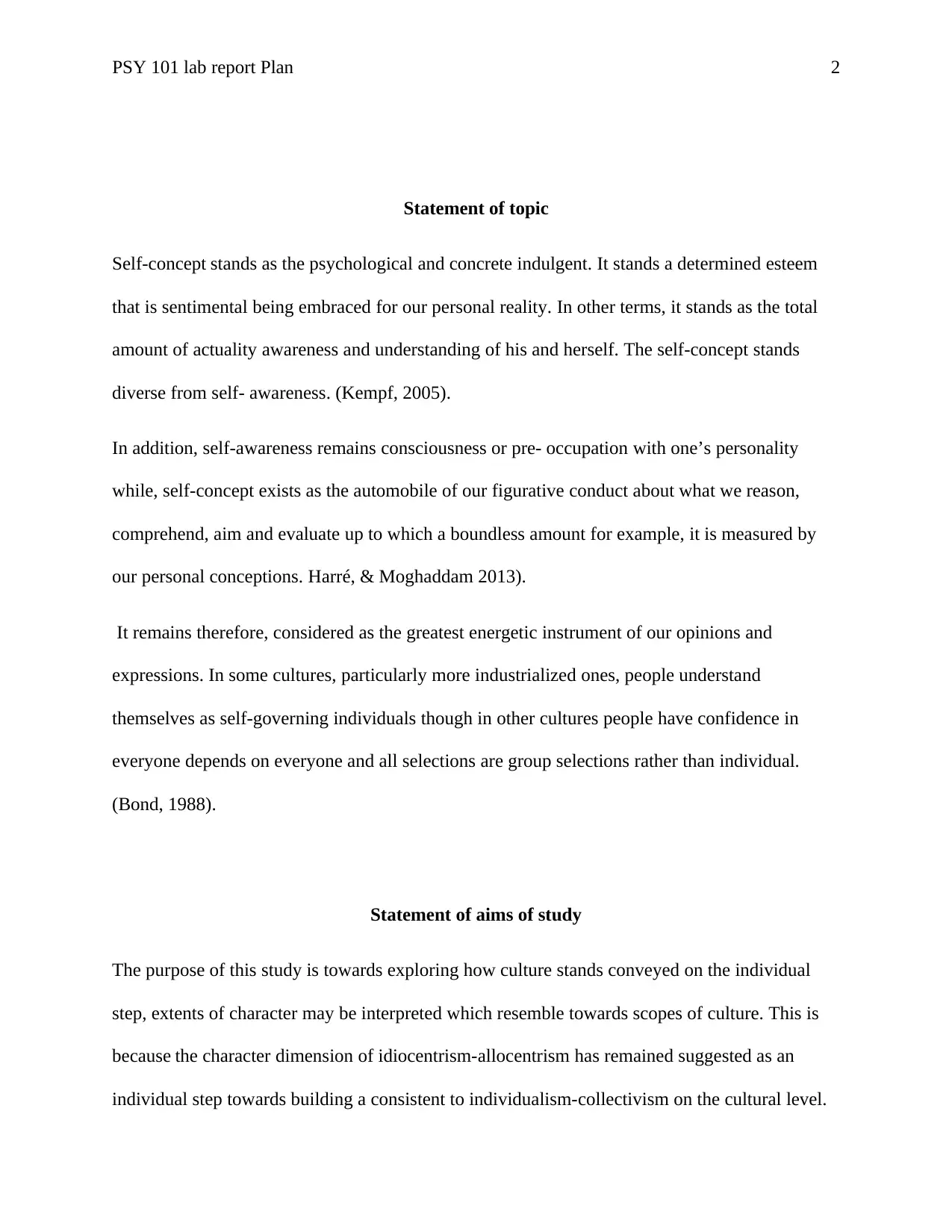
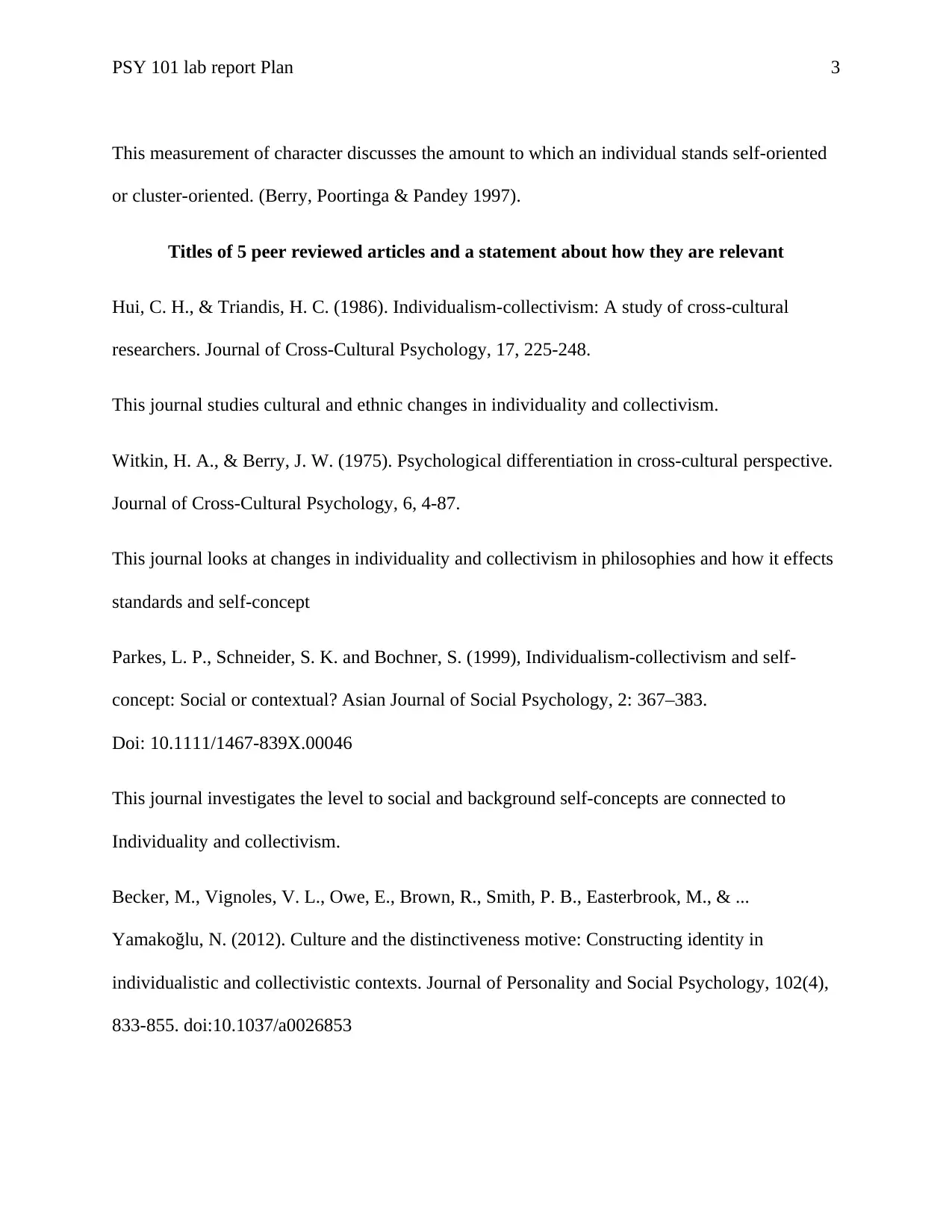

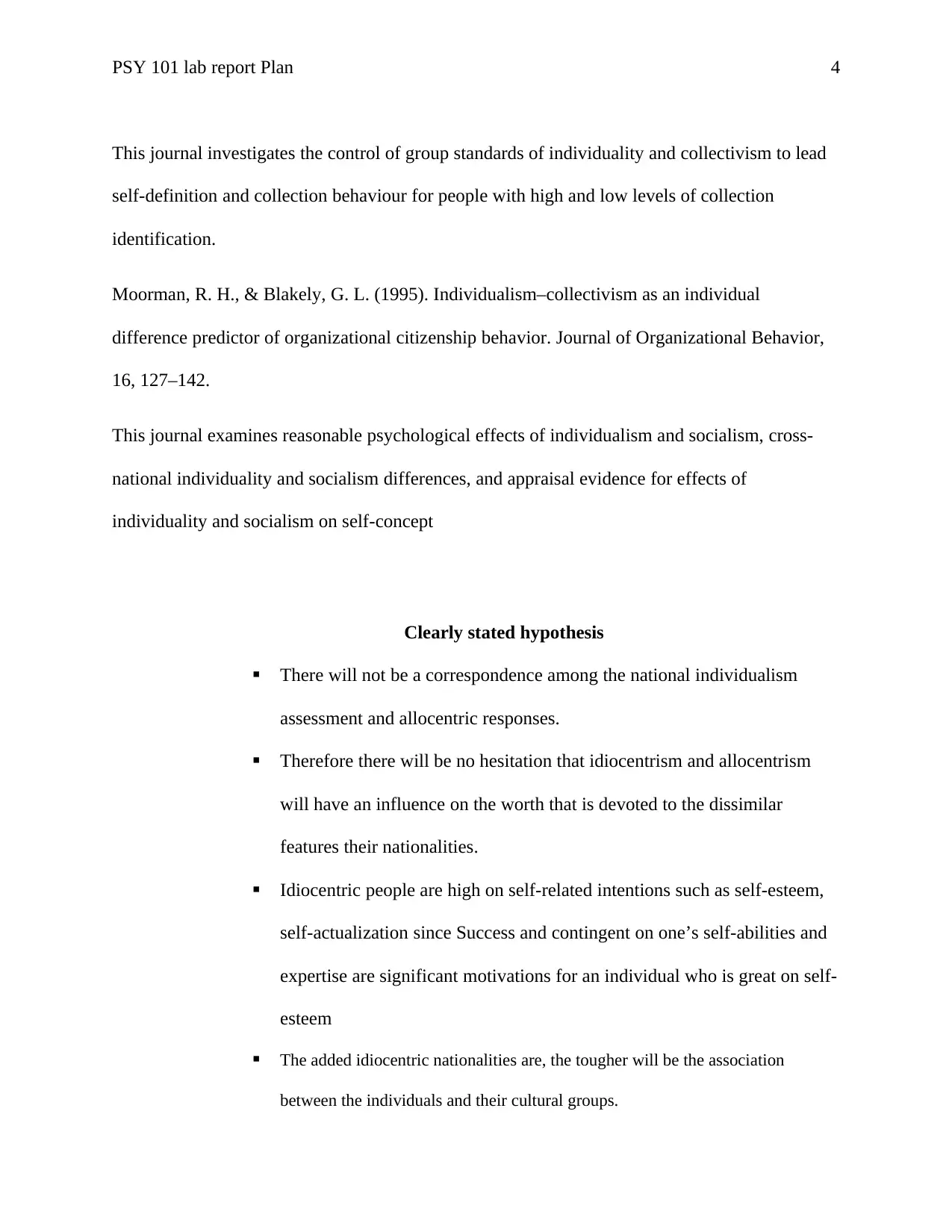
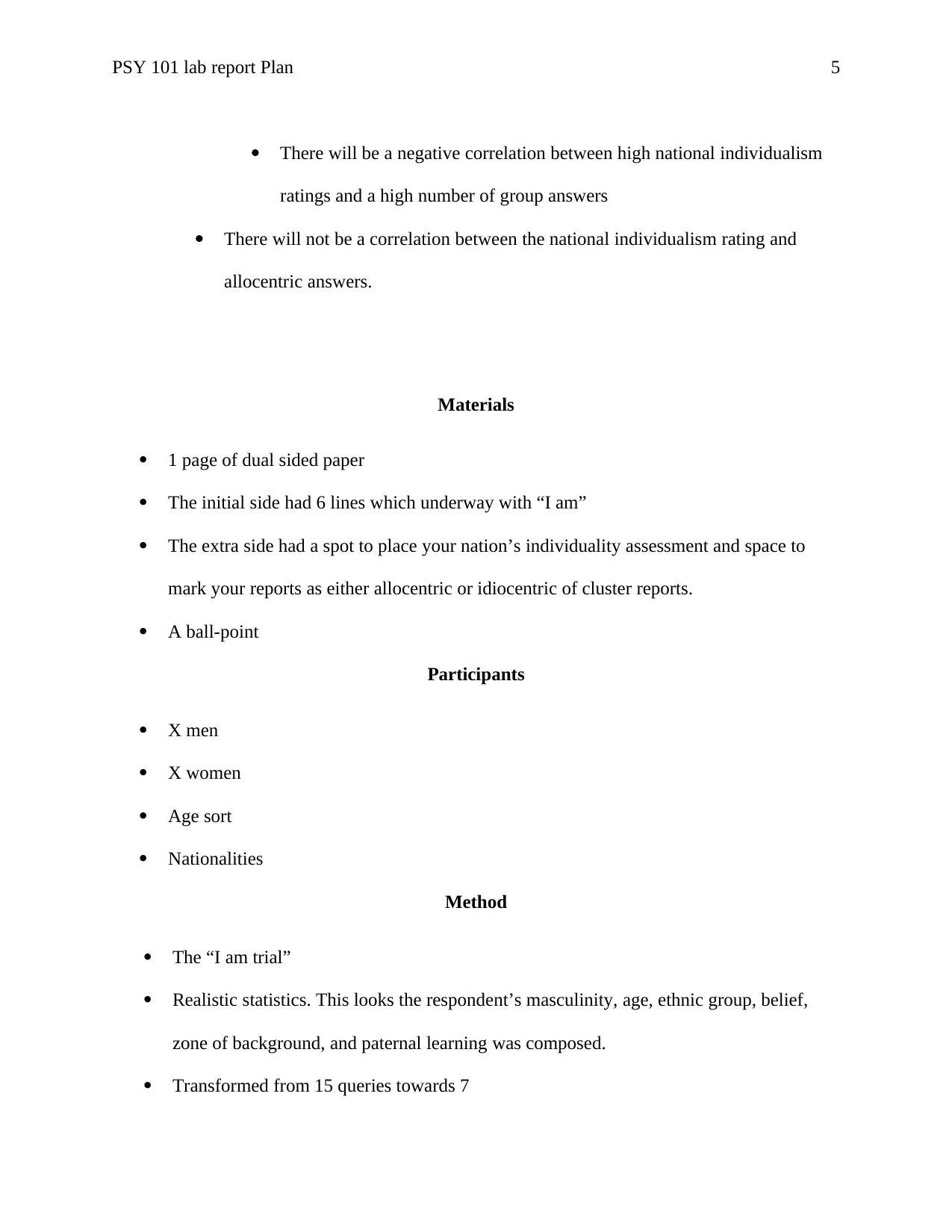
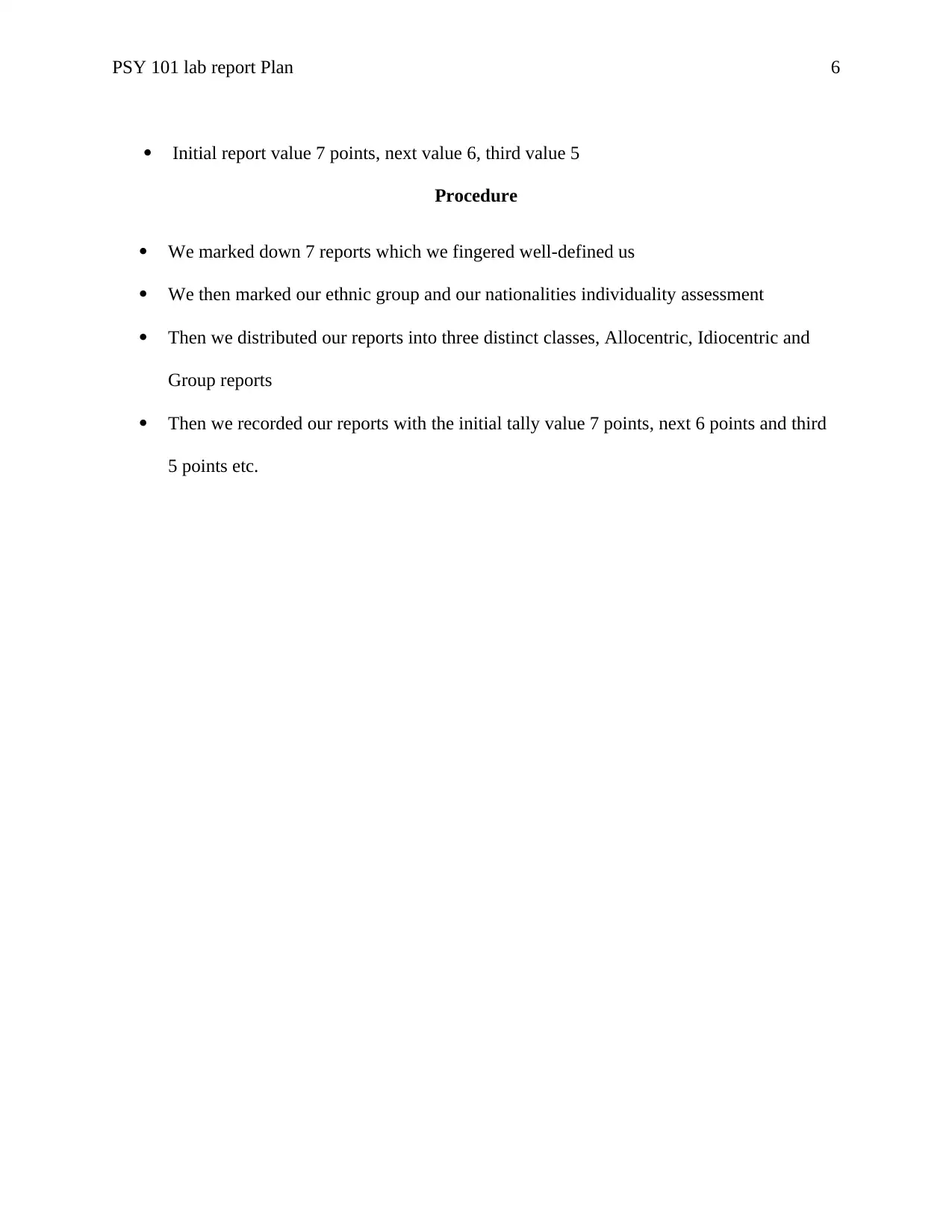
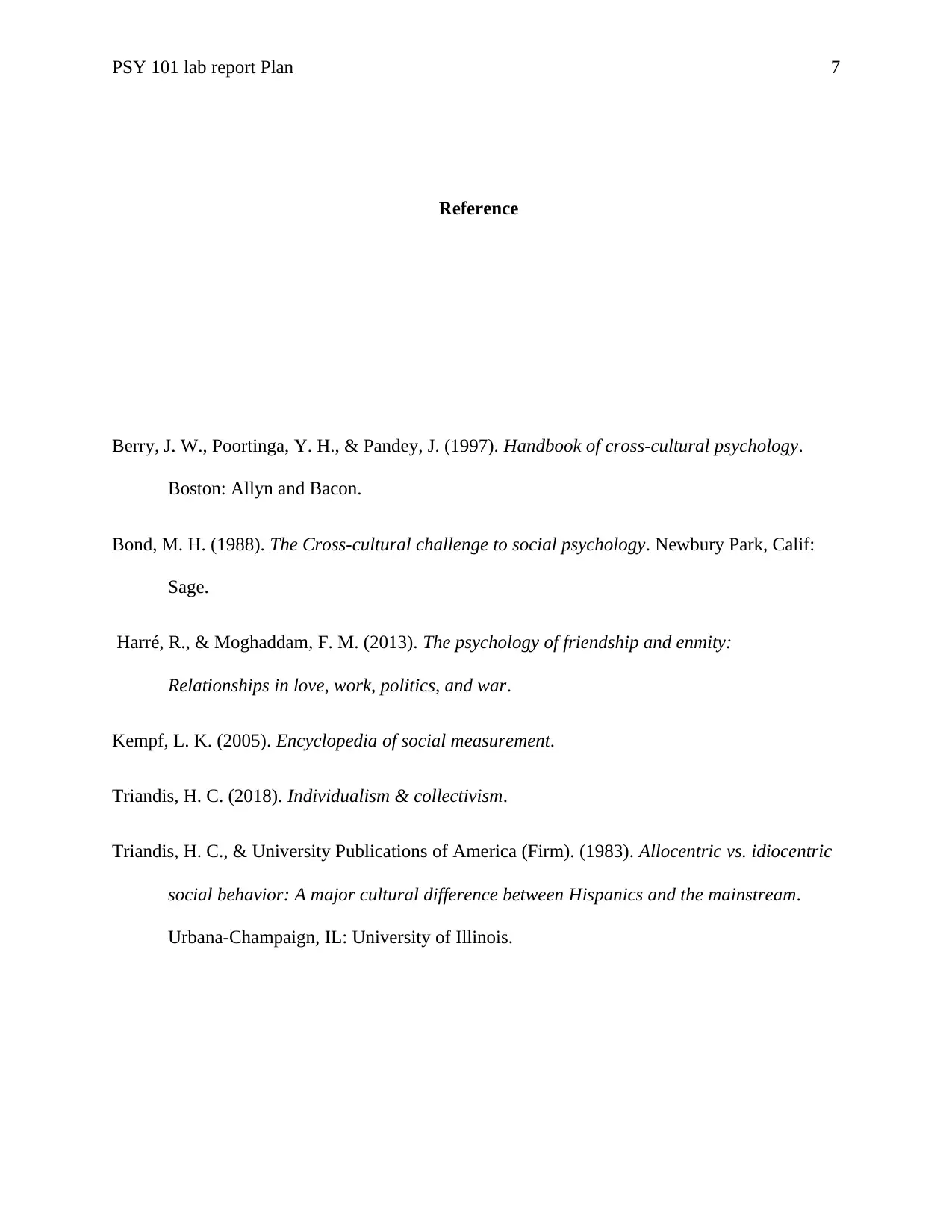

![[object Object]](/_next/static/media/star-bottom.7253800d.svg)